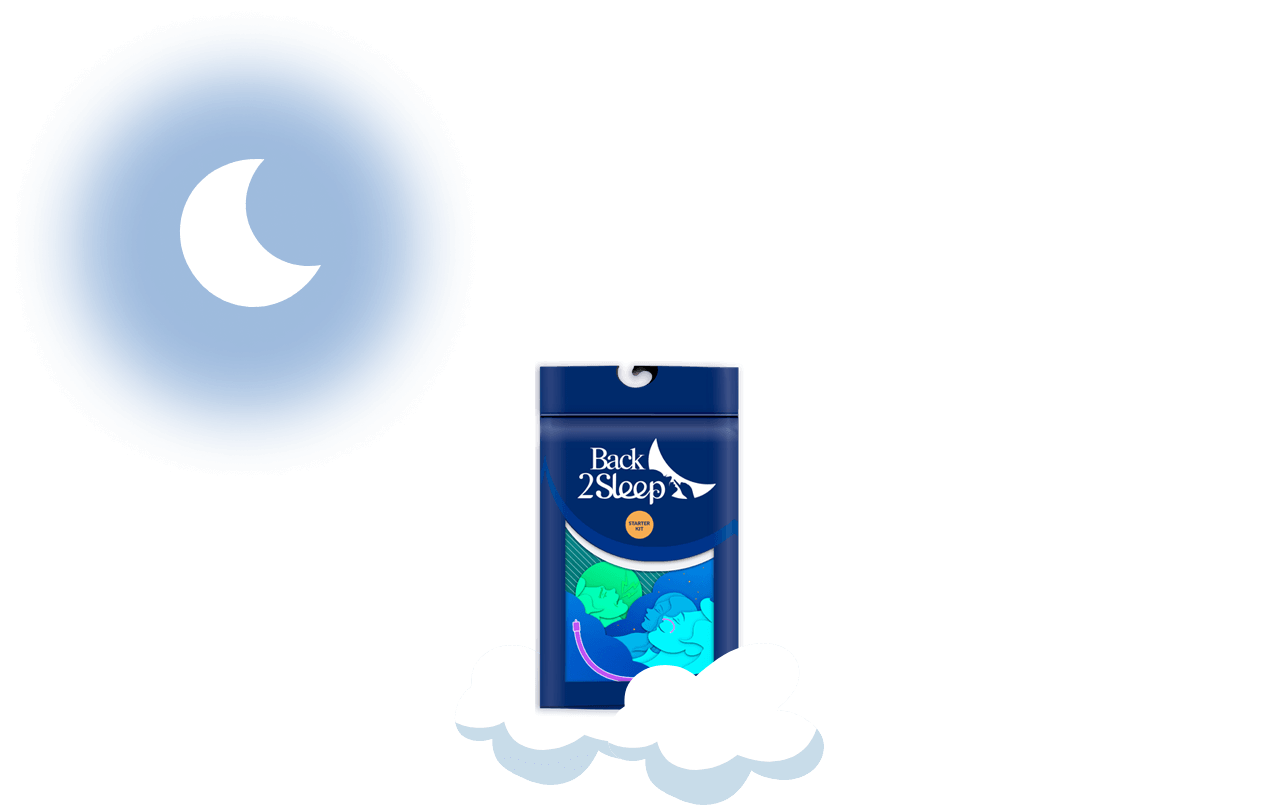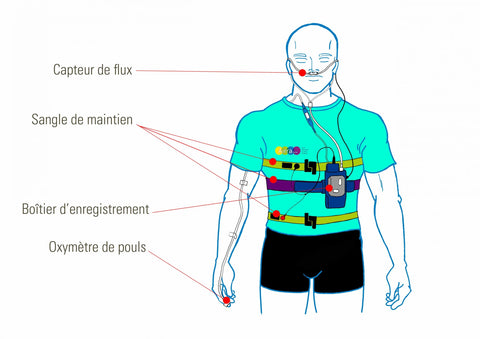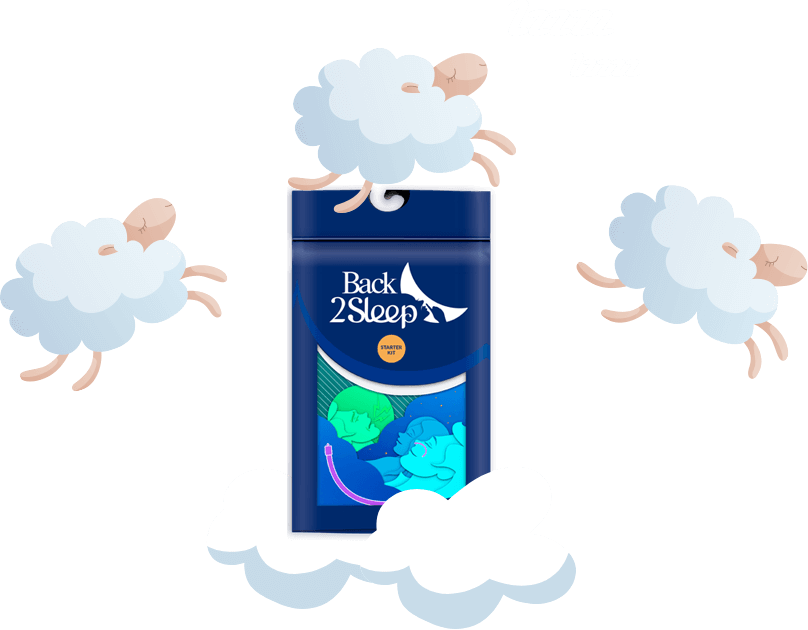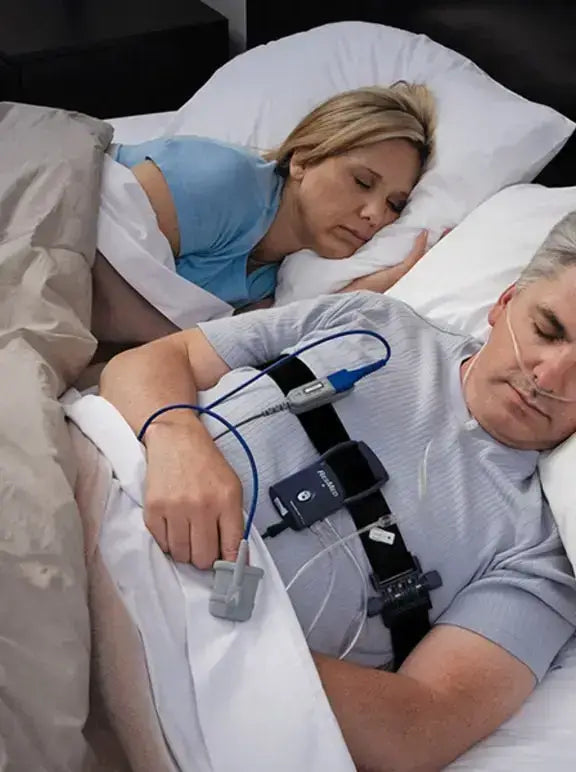Home Sleep Apnea Test: Complete Guide to At-Home Sleep Evaluation
Wondering if you can evaluate your sleep at home? Discover how home sleep apnea testing measures breathing, heart rate, and oxygenation peacefully in your bed, plus the revolutionary Back2Sleep solution for immediate relief.
Wondering if you can evaluate your sleep at home? The home sleep apnea test is the solution that allows you to measure breathing, heart rate, and oxygenation while sleeping peacefully in your bed - it's a comfortable, discreet way of obtaining sleep data without lab constraints, and when combined with innovative treatments like the Back2Sleep intranasal orthosis, you can achieve immediate improvements in sleep quality.

Easy to use, it allows you to measure while you sleep peacefully in your bed:
- 💊 your breathing
- 💊 heart rate
- 💊 oxygenation
It's a comfortable, discreet way of obtaining sleep data, without the constraints of a night in the lab.
Home Sleep Testing by the Numbers
What is Home Sleep Apnea Testing?
Why Choose an At-Home Test?
Choosing an at-home test means choosing comfort and simplicity. Imagine: no need to sleep in a foreign environment, surrounded by intimidating machines - rest assured, many patients do!
You carry out the test in your bed, surrounded by your usual landmarks. In addition, you reduce anxiety and often achieve results more representative of your natural sleep.
💡 Key Advantage: Home testing provides more natural results as you sleep in your familiar environment, reducing test anxiety and improving data accuracy.
Devices Used for Home Testing
Home sleep apnea testing devices are designed to be both accurate and non-intrusive.
They generally consist of:
- 💊 a respiratory flow sensor
- 💊 a chest belt to measure respiratory effort
- 💊 a pulse oximeter to monitor oxygen saturation
It's an entire miniaturized sleep laboratory, designed to provide you with data on your health without disturbing your rest.
Learn More About Sleep ApneaKey Components of Home Sleep Testing
Respiratory Monitoring
Measures breathing patterns, detecting pauses and reductions in airflow throughout the night to identify apnea episodes.
Heart Rate Tracking
Continuous monitoring of cardiac activity reveals stress on your cardiovascular system during breathing interruptions.
Oxygen Saturation
Pulse oximetry tracks blood oxygen levels, identifying dangerous drops that occur during apnea events.
Movement Detection
Records sleep position changes and awakenings, providing insights into sleep quality and disturbances.

How to Obtain the Ventilatory Polygraph Device?
Consultation with a Healthcare Professional
The first step is to consult a doctor, preferably a sleep specialist. After an initial assessment of your symptoms and perhaps a preliminary sleep study, the doctor may prescribe a home ventilation polygraph. This prescription is important for access to the device.
Choosing an Approved Supplier
With the prescription in hand, the next step is to choose an approved supplier to obtain the device. 💊 Hospitals, 💊 sleep clinics, 💊 some home medical service providers offer these devices. It is important to select a reputable supplier to guarantee the quality and reliability of the device.
Training in the Use of the Device
Once you've got the device, proper training in its use is essential. Suppliers usually offer an introductory session to familiarize you with the device, showing you how to set it up and use it correctly to ensure reliable results.
How to Prepare for Home Sleep Apnea Testing?
Hardware Installation
Installing the equipment is a fundamental step in ensuring the reliability of your home sleep apnea test. Here's a step-by-step guide to help you:
Read the Manual
First of all, take the time to read the instructions supplied with your kit. Each device may have specific features that are crucial to understand.
Sensor Preparation
Generally, you will have sensors to place on: 💊 your torso, 💊 your finger, 💊 your head. Make sure that each sensor is properly charged or fitted with new batteries.
Placing the Sensors
Chest sensor: position around chest. Pulse oximeter: attach to finger comfortably. Nasal flow sensor: position to capture breathing.
Functional Check
Switch on the recording device. Check light and sound indicators to make sure everything is working properly before sleep.

Fifth step - positioning for sleep: Once everything is installed, lie back and try to move slightly to make sure nothing shifts or comes loose. It is important that the sensors remain in place throughout the night to obtain reliable data.
Find Equipment Near YouTips for a Successful Test Night
A successful test night requires meticulous preparation to guarantee reliable results. Here are a few tips to optimize your experience:
Maintain your routine: sleep at your usual times so that the test accurately reflects your natural sleep pattern.
Create an environment conducive to sleep: make sure your bedroom is dark, quiet and at a comfortable temperature.
Avoid stimulants: limit caffeine and alcohol consumption, especially in the hours before bedtime.
Be careful with medication: some medicines can affect your sleep. Discuss with your doctor whether you can avoid or adjust them.
Relax before bed: adopt a relaxing routine before bed, such as reading a book or taking a hot bath.
Manage test-related anxiety: practice relaxation or meditation techniques to calm your mind.
Interpreting Home Sleep Apnea Test Results

Understanding Indicators
Interpreting the results of your home sleep apnea test requires an understanding of certain key terms and indicators. Here's a breakdown of the main elements you'll encounter:
| Indicator | Description | Normal Range |
|---|---|---|
| Apnea-Hypopnea Index (AHI) | Average number of significant pauses or reductions in breathing per hour of sleep | <5 normal | 5-15 mild | 15-30 moderate | >30 severe |
| Oxygen Saturation | Percentage of oxygen in your blood during sleep | Above 95% normal | Lower values indicate oxygen deprivation |
| Respiratory Events | Apneas (complete cessation) and hypopneas (reduction in breathing) | Frequency and duration determine severity |
| Movements and Awakenings | Sleep disruptions and position changes | Indicates sleep quality and respiratory impact |
When to Consult a Specialist?
If your results reveal any abnormalities, or if your AHI exceeds the norm, it's time to consult a sleep specialist. This professional will be able to interpret your data in the broader context of your health and symptoms and develop an appropriate treatment plan.
⚠️ Don't take the results lightly: they're a window on your nocturnal health and acting on them can dramatically improve your quality of life.
The Back2Sleep Solution: Intranasal Orthosis
The intranasal orthosis by Back2Sleep is easy to use and provides optimum comfort. It aims to keep the airways open during sleep, reducing the risk of apnea and nocturnal disturbances.
This device can be particularly beneficial for those who find CPAP (Continuous Positive Airway Pressure) uncomfortable or intrusive.

Immediate Results - Works from the first night without adaptation period
Non-Invasive - More comfortable than CPAP masks or surgical interventions
Travel-Friendly - Portable solution that works anywhere without electricity
Frequently Asked Questions About Home Sleep Apnea Testing
There are several types of sleep apnea, mainly: 💊 obstructive sleep apnea (OSA), 💊 central sleep apnea, 💊 mixed apnea. The home test is generally designed for OSA, which is the most common type. It measures breathing interruptions due to physical obstruction of the airways. For other types, notably central apnea, where the brain doesn't send the right signals to breathe, a more thorough laboratory test may be needed for a precise diagnosis.
Although practical, home tests have their limits. They do not capture the full spectrum of data that could be obtained in a sleep laboratory, such as: 💊 certain aspects of the movement, 💊 sleeping positions, 💊 neurological measurements. What's more, if the test is not properly configured, there may be errors in the data collected. For cases of severe sleep apnea, or for patients with other sleep disorders, a laboratory test can provide more complete and accurate information.
To maximize the accuracy of your results, follow the installation instructions carefully. Make sure that the sensors are correctly positioned, and that the device is activated. Keep your sleep as natural as possible during the test. After the test, consultation with a sleep specialist is essential to correctly interpret the results. A professional can not only analyze the data, but also contextualize it with your medical history and symptoms.
Back2Sleep offers an immediate, non-invasive solution that's particularly effective for those diagnosed with mild to moderate sleep apnea through home testing. Unlike CPAP machines, it's comfortable, discreet, and doesn't require electricity, making it ideal for consistent use.
Take Control of Your Sleep Health Today
Whether you're preparing for home testing or already have your results, Back2Sleep provides immediate relief
Order Your Back2Sleep KitLearn more: About Our Device | Latest Research | Contact Support | About Back2Sleep








